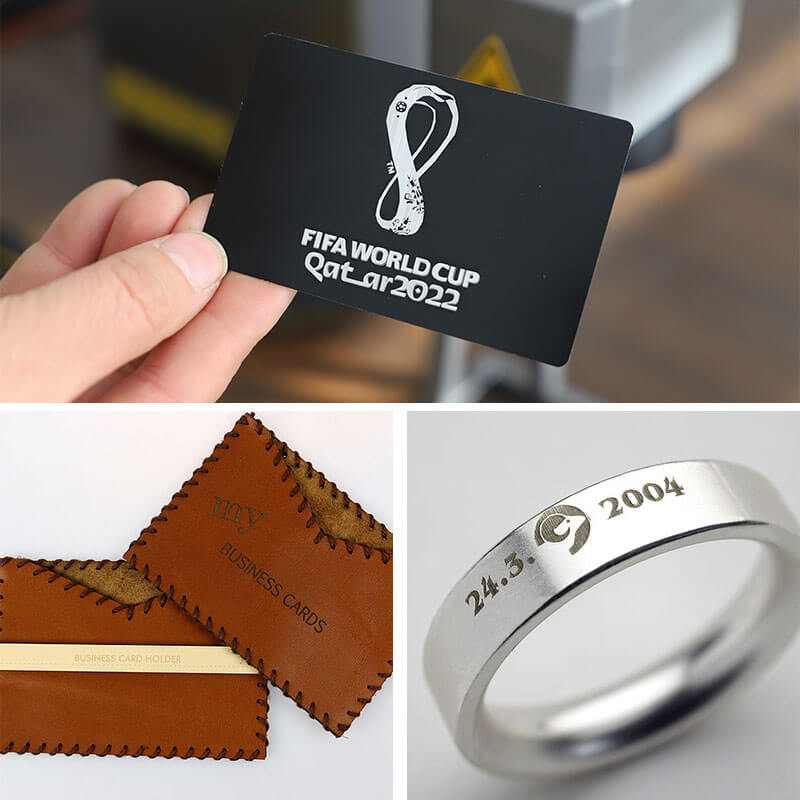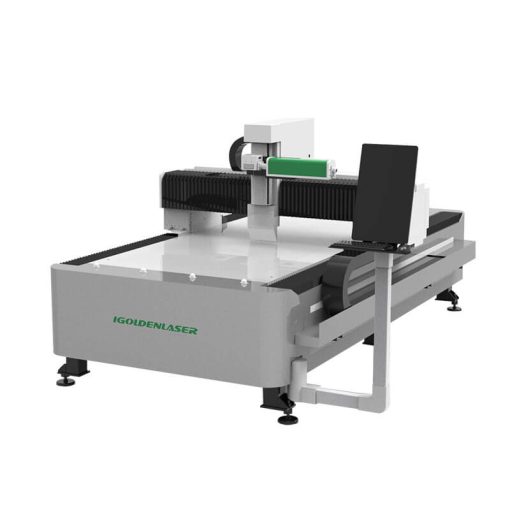In the dynamic world of manufacturing and industrial applications, the need for efficient and precise marking solutions has become paramount. Amidst the various marking technologies available, fiber laser marking machines have emerged as a true game-changer, redefining the standards of precision, speed, and versatility. These advanced machines harness the power of fiber laser technology to deliver unparalleled results, revolutionizing the way manufacturers approach part identification, product customization, and quality control.

Laser Marking Machine
Laser marking is the process of using a laser to produce a permanent, non-contact mark on an object. The laser creates a very small area of intense heat, and the mark is made by either melting or evaporating the material at that point.
Laser marking is often used for industrial applications because it results in a very precise, clean mark with no smudging or fading. It can also be used on a wide range of materials, including metals, plastics, and ceramics.

Fiber Lasers vs. Traditional Marking
Fiber lasers have transformed the engraving process and made it multiple times better. Let’s compare some of the traditional marking techniques with a fiber laser.
Inkjet marking Ink Jet vs Fiber Laser Marking
Inkjet marking uses ink to mark text, numbers, bar codes, etc. It’s functional, but the markings are susceptible to fading and water damage since it uses water-based ink. Fiber lasers provide a much more permanent and long-lasting solution.
Electrochemical Etch vs Fiber Laser Marking
Electrochemical Etching requires carefully cut felts, a marking head, a conductive net, and an electrolyte for marking slows down the overall process. Also, the process is manual, which isn’t suitable for automation. Fiber lasers are a hassle-free and much faster alternative.
Dot Peen vs Fiber Laser Marking
Dot Peen is loud, slow, and less precise. They can’t even engrave bar codes. On the contrary, lasers can engrave various materials and aren’t limited by complexity. Dot peen also has a higher operational cost.
Laser Engraving Machine
In the realm of modern manufacturing and customization, precision and versatility are paramount. Fiber laser engraving machines have emerged as indispensable tools in various industries, offering unmatched capabilities in engraving, marking, and etching. From intricate designs on jewelry to precise serial numbers on industrial components, these machines have revolutionized the way we personalize and identify products.
At the heart of fiber laser engraving machines lies cutting-edge technology that enables high-precision marking on a wide range of materials. Unlike traditional engraving methods, which rely on mechanical tools or CO2 lasers, fiber lasers utilize a fiber-optic medium to generate intense laser beams. This technology offers several advantages, including superior marking quality, faster processing speeds, and minimal maintenance requirements.
One of the most remarkable features of fiber laser engraving machines is their versatility. These machines can engrave on various materials, including metals (such as steel, aluminum, and titanium), plastics, ceramics, and even some organic materials like wood and leather.
A CO2 laser engraving machine is an automatic laser cutting machine that uses carbon dioxide light beam to engrave and cut wood, MDF, plywood, chipboard, dieboard, cardborad, acrylic, fabric, jeans, plastic, leather, paper, ABS, EPM, PE, PES, PUR, PVB, PVC, PUR, PMMA, PTFE and thin metals, which is widely used in industrial manufacturing applications, school education, small businesses, home business, small shop and home shop. It is composed of bed frame, cutting head, lens, mirror, generator, power supply, water chiller, control panel and CNC (Computer Numerical Controlled) system.
CO2 laser is a pulsed wave beam in which carbon dioxide gas obtains continuous wave or high output area in the infrared of the medium. The wavelength is 10.6μm. It is a light source used for rapid prototyping. High-power lasers are used for cutting and drilling. The medium power output is used for engraving. Since the output wavelength is easily absorbed by water, it is also widely used in medical treatment.
A CO2 laser generator is a gas laser generator with CO2 gas as the working material. The discharge tube is usually made of glass or quartz material, filled with CO2 gas and other auxiliary gases (mainly helium and nitrogen, and usually a small amount of hydrogen or xenon). The electrode is generally a hollow nickel cylinder and a resonant cavity. One end is a gold-plated total reflection mirror, and the other end is a partial reflection mirror polished with germanium or gallium arsenide. When a high voltage (usually DC or low-frequency AC) is applied to the electrode, a glow discharge is generated in the discharge tube, and there is a laser output at one end of the germanium mirror, and its wavelength is in the mid-infrared band near 10.6 microns.
Carbon dioxide laser generators are usually made of hard glass, and generally adopt a layered sleeve structure. The innermost layer is the discharge tube, the second layer is the water-cooled casing, and the outermost layer is the gas storage tube. The diameter of the discharge tube of the carbon dioxide laser generator is larger than that of the He-Ne laser tube. Generally speaking, the thickness of the discharge tube has no effect on the output power, mainly considering the diffraction effect caused by the size of the light spot, which should be determined according to the tube length. The longer tube is thicker, and the shorter tube is thinner. The length of the discharge tube is proportional to the output power. Within a certain length range, the output power per meter of discharge tube length increases with the total length. The purpose of adding a water cooling jacket is to cool the working gas and stabilize the output power. The discharge tube is connected to the gas storage tube at both ends, that is, one end of the gas storage tube has a small hole communicating with the discharge tube, and the other end communicates with the discharge tube through the spiral return tube, so that the gas can circulate in the discharge tube and the gas storage tube flow, the gas in the discharge tube is exchanged at any time.
A CO2 laser tube is a sealed glass tube composed of hard glass, a resonant cavity and electrodes that produces a light beam for cutting and engraving materials.

























Discussion (0)
There are no comments for this doc yet.